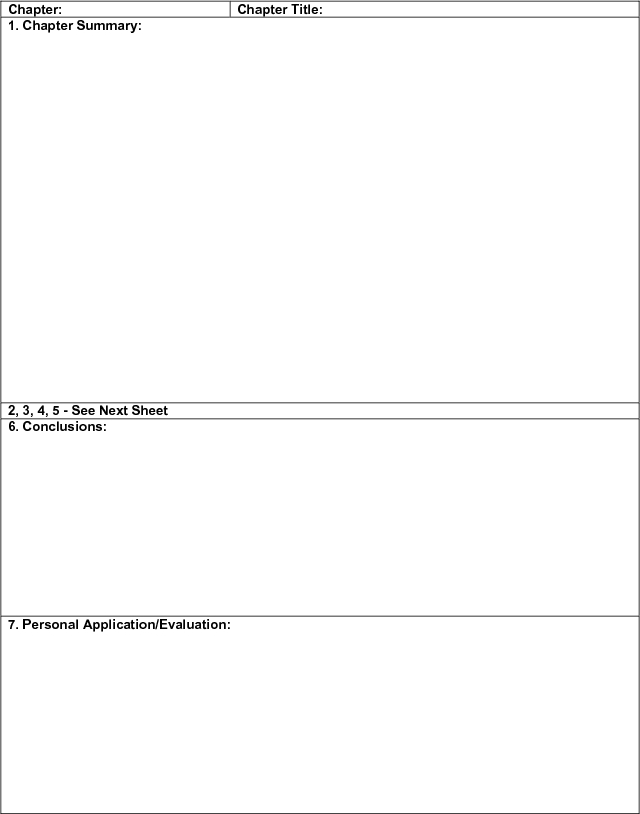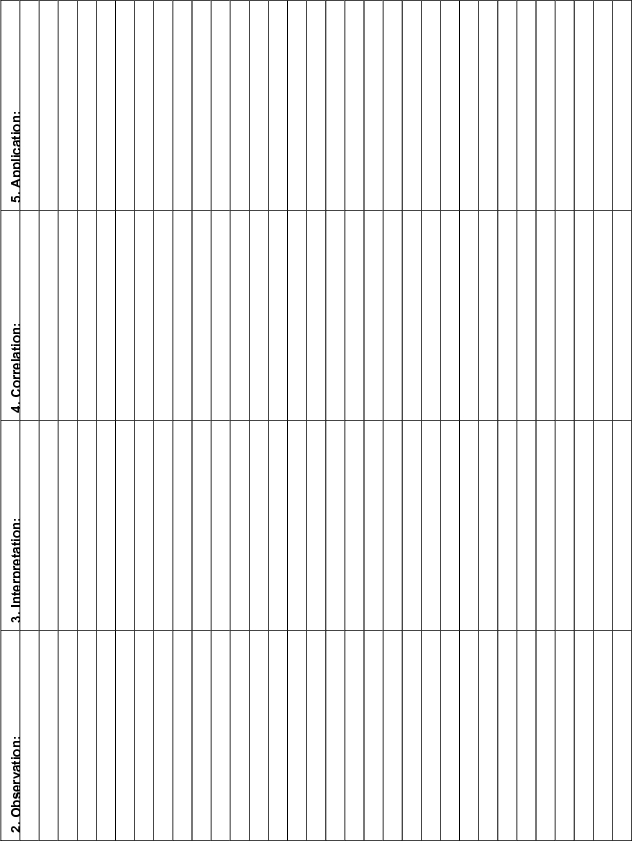Method Ten - The Chapter Analysis Method of Bible Study
The Chapter Analysis Method picks up where the Book Summary Method leaves off. You now have a reasonable grasp of the overall picture of the book, what it means, why it was written, etc. and you are now able to begin to examine the individual items making up the book. The best way of subdividing a book of the Bible is to use the chapter divisions, since these are generally accurate, and to study each chapter in detail. You will examine each paragraph, sentence, and word in a detailed and systematic manner.
The Chapter Analysis Method is the second of three methods of Bible study that, together, give you an extremely comprehensive view of each book of the Bible. These three will require the greatest effort on your part but will ultimately yield the best results when used properly. Each of the three emphasizes a different aspect of one overall process of study which are:
Survey - Method 9 - Book Survey Method - in which you will obtain a detailed overview of a particular book of the Bible
Analysis - Method 10 - Chapter Analysis Method - in which you will study everything in each chapter in great detail
Synthesis - Method 11 - Book Synthesis Method - in which you will take what you learned in the previous two study stages and put it all back together, drawing conclusions as you go and gaining an appreciation of the whole of the book.
10.1 - Tools
10.1.1 - Bible and several additional modern translations
10.1.2 - Bible dictionary and/or Bible encyclopedia
10.1.3 - Bible handbook, such as Unger's or Halley's
10.1.4 - Old and New Testament surveys
10.1.5 - Cultural contextualization tools
10.2 - Steps
Step 1 - Create a chapter summary. First read the chapter several times over, making some general observations on the chapter as a whole. Once you have completed this process describe the content of the chapter, summarizing it in one of the following ways:
10.2.1 - Paraphrase the chapter, rephrasing it in your own words in such a way that you could read it to an other person in a way that they would understand.
10.2.2 - Outline the chapter, following the internal paragraph divisions of the chapter. Give each paragraph a heading and place the subpoints of the paragraph beneath.
10.2.3 - Rewrite the chapter leaving out all modifying clauses and phrases. You would write out the chapter using just the subjects, verbs, and objects.
Step 2 - Note your observations and insights. Look at every detail of the chapter, examining each sentence and word, and writing down everything you see. Refer to the section on the OICA approach to Bible study involving observation for some assistance in this step. On the following page you will also find a list of things to look for in a Bible passage.
Step 3 - Ask detailed questions of the chapter. Write upon the form each question you ask even if you cannot find an answer for it now. The time may come when you do find an answer to the question in an other study and be able then to place it here as well. Be sure to note any difficulties you have with the passage so that you can research them in the future. Refer to the list below to help you find answers to your questions:
10.2.3.1 - Observe the context of the passage, refer to step two of the Book Survey Method for assistance here.
10.2.3.2 - Define the words and phrases used so that you have the correct meaning of the structural components of the passage.
10.2.3.3 - The structure and grammar of a passage is of benefit to help you to understand the flow of ideas and concepts within the passage so that you can see them in relation to each other.
10.2.3.4 - Use other translations to see if their use of English is more understandable.
10.2.3.5 - Try to view the passage against its background (historic, cultural, geographic, economic, social, current events, etc.). Use your Bible dictionary or encyclopedia to obtain this information.
10.2.3.6 - See what other passages in the Bible say about the concepts covered within this chapter. This is actually done more thoroughly in step four.
10.2.3.7 - If all other means have failed refer to a commentary and compare your interpretation of the passage with that of the commentator.
Step 4 - Correlate your chapter with other Bible passages. See step seven of the Chapter Summary Method for help on using cross references.
Step 5 - Make a list of some possible applications. You will not be attempting to apply all that you write here, you are making a list for future reference and from which, in step seven, you will choose one application to work into your life.
Step 6 - Formulate and make note of some conclusions. After reviewing the first five steps of this study write down your conclusions on the chapter. You may discover additional information during this step which you should also note.
Step 7 - Write out one application from the list you compiled in step five. Be sure that it is practical and that it is applicable to your life. Remember to return to your written application in the near future so that you can evaluate your progress.
What to Look for in a Chapter Analysis Study
Listed here in brief form are 30 items to look for in your observation part of the Chapter Analysis Method:
1. Ask the six vital observation questions: What? Who? Where? When? Why? How?
2. Look for key words.
3. Look for repeated words and phrases.
4. Look for questions being asked.
5. Look for answers being given.
6. Look for commands.
7. Look for warnings.
8. Look for comparisons - things that are alike.
9. Look for contrasts - things that are different.
10. Look for illustrations.
11. Look for causes and effects and reasons for doing things.
12. Look for promises and their conditions for fulfillment.
13. Look for progression from the general to the specific.
14. Look for progression from the specific to the general.
15. Look for steps of progression in a narrative or biography.
16. Look for lists of things.
17. Look for results.
18. Look for advice, admonitions, and attitudes.
19. Look for the tone of the passage - emotional atmosphere.
20. Look for connectives, articles, and prepositions.
21. Look for explanations.
22. Look for Old Testament quotes in the New Testament.
23. Look for the literary form.
24. Look for paradoxes.
25. Look for emphasis through the use of space - proportion.
26. Look for planned exaggerations or hyperboles.
27. Look at the grammatical construction of each sentence.
28. Look for the use of the current events of the times.
29. Look for the force of the verbs.
30. Look for anything unusual or unexpected.
The above are just a few of the things you can look for in your observation step in you Bible study. Don't let this long list discourage you. You shouldn't try to do each one of the suggested items. It will take time for you to get into the habit of seeing more and more things in the text. The more you practice observing, the more alert you will become. So remember: look, search, observe, then write your findings down!

